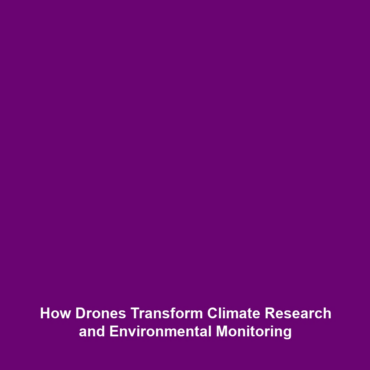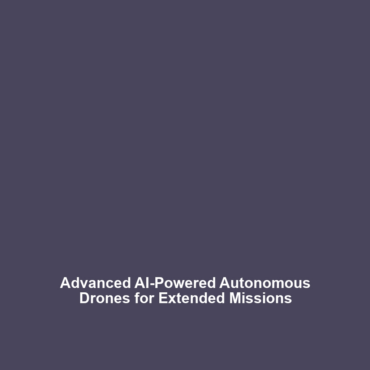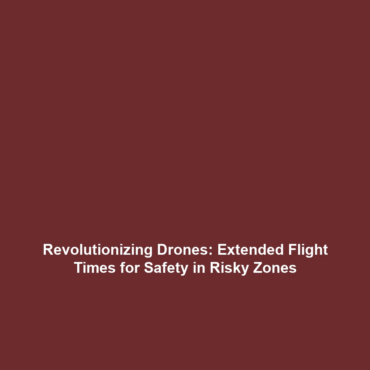Climate and Atmospheric Research: Drones for Monitoring Environmental Changes
Introduction
The use of drones in climate and atmospheric research has transformed the way scientists monitor and analyze environmental changes. These unmanned aerial vehicles (UAVs) offer unique advantages, such as access to hard-to-reach areas, the ability to cover large geographical expanses, and the provision of real-time data. In the context of drones in science, their ability to gather atmospheric data has immense implications for understanding climate patterns, predicting weather events, and addressing environmental challenges. This article delves into the significance of drones in climate research, their applications, challenges, and future innovations.
Key Concepts
Understanding Drones in Climate Research
Drones equipped with advanced sensors and imaging technology are increasingly pivotal in climate and atmospheric research. They operate by collecting data on temperature, humidity, wind patterns, and even air quality, aiding researchers in forming a comprehensive understanding of atmospheric conditions. These drones exemplify the intersection of drones in science and environmental studies by facilitating:
- Real-time monitoring of volatile weather systems.
- Assessment of climate change impacts through long-term data collection.
- Remote sensing capabilities for vegetation health and land usage.
Applications and Real-World Uses
The applications of drones for monitoring environmental changes are vast, showcasing their potential in the scientific community. Notable examples include:
- Disaster Response: Drones are used to assess damage after natural disasters, providing vital information for recovery efforts.
- Research Expeditions: In remote locations, drones facilitate climate data collection where traditional methods are impractical.
- Precision Agriculture: Drones optimize the use of water and fertilizers, helping combat agricultural impacts on the environment.
These instances demonstrate how climate and atmospheric research benefits from the innovative applications of drones in science.
Current Challenges
Despite their advantages, challenges of drones for monitoring environmental changes persist in the scientific realm. Key issues include:
- Regulatory Limitations: Stringent regulations govern drone flights, particularly in populated areas.
- Data Management: Handling and analyzing large datasets collected by drones can be complex and resource-intensive.
- Technological Constraints: Battery life and payload limitations can restrict operational effectiveness.
Future Research and Innovations
The future of drones in climate and atmospheric research is poised for significant innovations. Emerging technologies, such as autonomous flight capabilities, improved sensor technology, and integration with artificial intelligence, will enhance data collection and analysis. Future breakthroughs may include:
- Swarm Technology: Utilizing fleets of drones to cover more territory efficiently.
- Advanced Predictive Analytics: Applying machine learning algorithms to predict weather patterns based on drone data.
- Environmental Restoration Tools: Equipping drones to not only monitor but actively contribute to ecological recovery efforts.
These advancements promise to further solidify the role of drones in science as a crucial tool for understanding and mitigating climate change.
Conclusion
In conclusion, the integration of drones for monitoring environmental changes plays a vital role in advancing climate and atmospheric research. As their technologies evolve, the potential for drones in scientific applications continues to grow, promising impactful changes in how we understand our environment. For further reading on related topics, consider exploring our articles on drone technology innovations and solutions to climate change.


